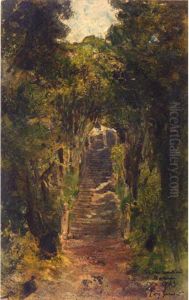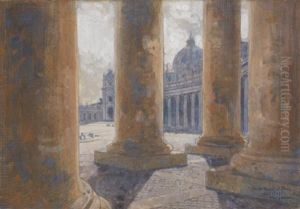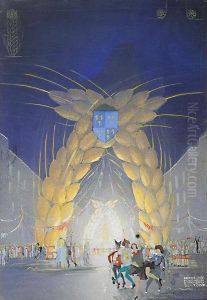Tony Garnier Paintings
Tony Garnier was a noted French architect and city planner, born on August 13, 1869, in Lyon, France. He is best remembered for his pioneering role in the development of modern urban planning and architecture. Garnier was educated at the École nationale supérieure des beaux-arts in Paris, where he studied under the tutelage of prominent architects like Jean-Louis Pascal.
In 1899, Garnier won the prestigious Prix de Rome for architecture, which allowed him to study at the French Academy in Rome, Villa Medici, for four years. It was during his time in Rome that he began to develop his ideas on urbanism, which were later encapsulated in his seminal work, 'Une Cité Industrielle' (An Industrial City), first published in 1917. This work proposed a utopian city designed to meet the needs of the modern industrial society, with a focus on functionality, hygiene, and rational urban planning. His ideas were revolutionary at the time, emphasizing green spaces, industrial zones, and residential areas planned for optimal living conditions.
Garnier's architectural style was heavily influenced by the emerging modernist movement, which sought to break away from historical styles and create buildings that were functional and suited to their purpose. However, he was also deeply committed to the integration of architecture with its natural surroundings, which was a departure from some of his contemporaries.
Throughout his career, Garnier was involved in various projects, including the design of industrial buildings, schools, and housing projects. One of his most significant real-world applications of his urban planning principles was the development of the Grange Blanche (now Edouard Herriot Hospital) in Lyon, constructed between 1913 and 1933. This project reflected his vision for a modern hospital complex with ample light and air, showcasing his commitment to improving living conditions through architecture.
Tony Garnier's influence extended beyond his architectural designs; he was also a teacher and mentor to future generations of architects. His ideas on urban planning and architecture continued to inspire and shape the field long after his death on January 19, 1948, in Roquefort-la-Bédoule, France. Today, Garnier is celebrated as a visionary who laid the groundwork for many of the principles that continue to guide urban development and modern architecture.


